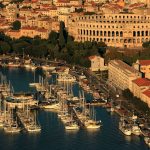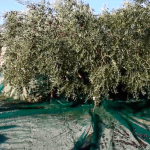As Morski/Ivo Glavas writes, When looking at how Pirovac was once referred to back in April 1930, you might find yourself raising an eyebrow or two…
“As is known, recently, at the request of the village of Zloselo in the Municipality of Tijesno in the Sibenik region, it was decided by decree to replace the name of the respective village with the name of Pirovac, which is older and belongs more to the national past of that region, since the name of Zloselo was given during the time of the struggle with the Ottomans (Turks), i.e. during the time of Venetian rule.”
That’s how they talk about the great ceremony at which on April the 23rd, 1930, the inhabitants of the former Zloselo changed the name of their settlement to Pirovac. This was reported on by a local Split newspaper called Novo doba (New age). On that day, a commemorative plaque was placed above the entrance to the settlement, which is part of the former defensive wall from the time of the long battles with the marauding Ottomans.
In this way, the people of Pirovac scrapped the name of the settlement that was of course, not pleasant at all to their ears. Who would want to tell people they’re from the evil village when asked? The real truth about the name of their settlement is quite different and, as it always happens, buried a little deeper in history, local portal SibenikIN writes.
The local people of Pirovac were brave and cunning and doggedly determined to defend their homes from the Ottoman invaders, but they were few in numbers compared to the Turkish forces. That’s why in a small group, headed by a local captain, they left their defensive fort and ambushed a Turkish officer. Thinking that there were many of them coming to attack them, the Turks ran away shouting: “Evil village, evil people!”
This is how the origin of the name Zloselo is explained on the official website of the Municipality of Pirovac. However, it’s of course not the only settlement in the Republic of Croatia and elsewhere in Southeastern Europe with the prefix ”evil”. None of these other names have anything to do with the Ottomans or with their invasion.
Zlopolje (evil field), for example, is the name for fertile fields on the Dalmatian islands of Vis, Korcula and Lastovo. Velo and Malo Zlopolje on the island of Vis are part of the Vis area known for the popular Vugava grape variety. On the first Austrian cadastral map of the island of Vis from the first half of the 19th century, there were already vineyards there. The name Zlopolje hardly outlines the character of that part of the area. As we’ve also seen, the easiest thing to do is to blame the Ottomans for, well… just about everything, even in situations and in locations they’ve never been in.
The oldest historical record we’ve found that mentions Zloselo (which is now Pirovac) dates all the way back to 1460. At that time, some Vlaska families, by contract with Sibenik nobles from the Tomasevic and Misic families, settled in the village of Zloselo. Therefore, Zloselo had existed under that name since some time before 1460, which was again before the serious penetration of the Ottomans into Dalmatia and the territory of Sibenik. In an ownership dispute back in 1505 between the then owner of Zloselo, Sibenik noble Petar Draganic, and the Bishopric of Sibenik, witnesses claimed that Zloselo as a settlement was founded 50 years ago, i.e. somewhere around the year 1450. Therefore, when all the aforementioned historical data is carefully analysed, Zloselo, or should we say Pirovac to be polite, was most likely founded by Sibenik nobleman Toma Tomasevic sometime during the first half of the 15th century.
If that’s the case, where did the name Pirovac actually come from? This question can be answered in the same historical document from way back in 1460, because according to that document, Pirane is the former name for Pirovac. Later on in history, in archival documents, the names of Pirane and Zloselo were exchanged for the current Pirovac.
There were also other locations called ”Zloselo” close to Sibenik near what is now Zaton…
Looking back in time, there was another Zloselo on the territory of medieval Sibenik, somewhere in the western part of Zaton. Those locations called Zloselo were also founded in the 15th century.
The story of Pirovac and Zloselo is a standard story about how we think we know everything and that everything has been known for a long time, and of course, some blame on the Ottomans is implied. In these cases, our alleged knowledge is the result of solutions that we’ve seen at first glance and accepted without doing any deeper scientific analysis. We wouldn’t know this much about the history of Zloselo and Pirovac if it weren’t for Kristijan Juran, professor of history from the University of Zadar, whose main topics are the territory of medieval Sibenik, and especially the island of Murter.
For more, make sure to check out our dedicated lifestyle section.











